
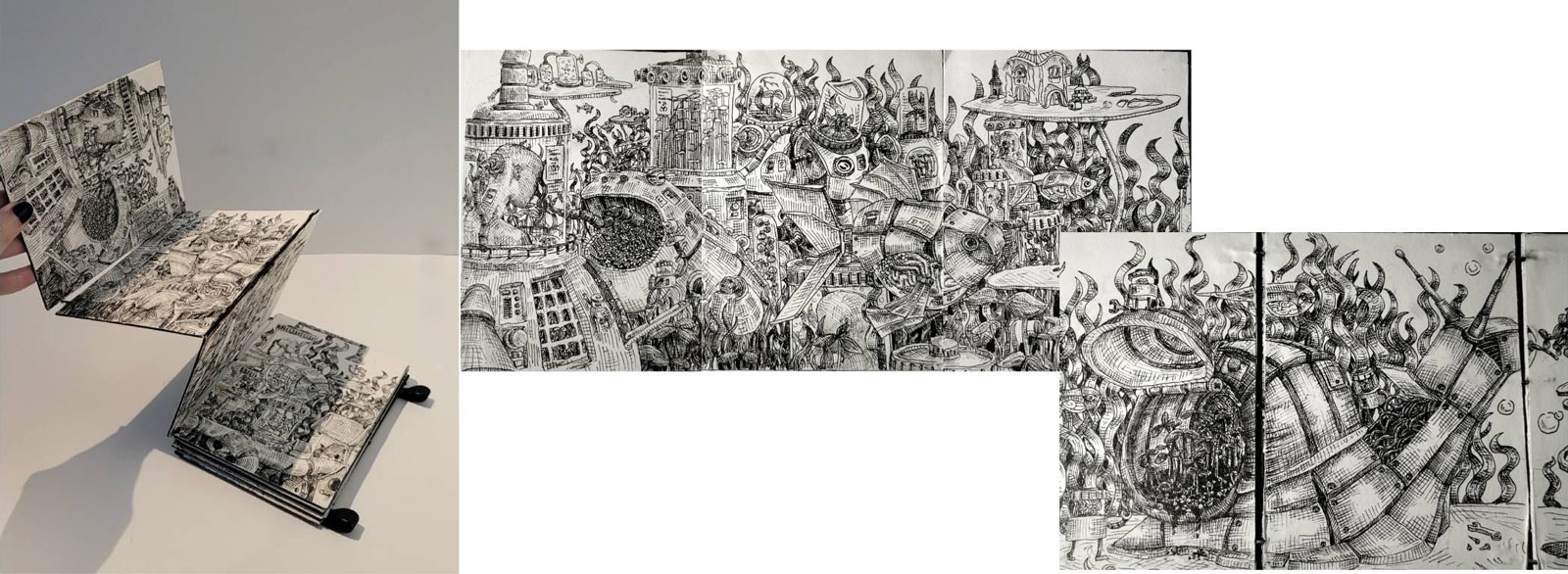
Pond Accordion

Height: 6" x Width: 45" | Material(s): Mat board paper, elastics, Micron pen | Process(es): Cut out 10 papers, connected them, sketched composition line art, glued to boards strung together | Idea(s): Wanted to create an interactive artwork inspired by ponds. I created robots based off pond wildlife. | Curatorial Note: Wildly imaginative artwork that moves from drawing to 3-D and back again.
Natalie Keszthelyi
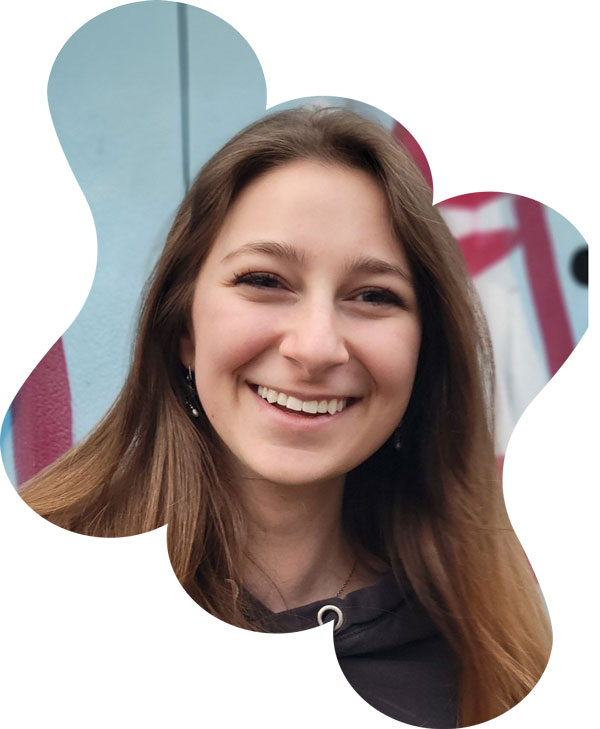

AP 2-D
Harrison High School
Kennesaw, GA, USA
Student statement
Student statement
Does your work reference or draw on a contemporary or historical art-making style, practice, or tradition? If so, please explain.
My piece "Beehive" takes inspiration from surrealist paintings from the 1920s to the 1930s as well as the pen drawings of my favorite artists. My piece "Snail Pot" is inspired by contemporary surreal decor. My piece "Pond Accordion" takes inspiration from surrealist paintings from the 1920s to the 1930s as well as the pen drawings of my favorite artists.
How did this artwork relate to your sustained investigation inquiry?
My portfolio investigation inquiry was, "How can I reimagine complexity within nature in an innovative and interactive way?" For my “Beehive,” I was inspired by a documentary on bees and their hive dynamics. I wanted to reimagine what a beehive might look and function like if they evolved without human interference. Drawing from my research, I envisioned them repurposing found materials for greater efficiency and growing to the size of an average car. In the artwork, the bees are equipped with pollination machinery, while the bottom right features a central food source. Here, nutrients are collected and transformed into food orbs, which are distributed throughout the hive via intricate pipe systems, reaching the eggs. Scattered across the piece are storage pods filled with remnants of human items that are repurposed into hive machinery. When I was finished after three months of drawing, to further engage viewers, I created an "eye-spy" key highlighting some of these hidden repurposed objects, inviting a deeper exploration of the piece.
For my “Pond Accordion,” I transformed a pond ecosystem into a mechanical world where animals were robots powered by plants. To sustain this robotic ecosystem, I designed specialized pods that grow "battery plants," the energy source for the robots. I also introduced worker robots that oversee the health of the plant-powered robots. They make repairs and give the robots the battery plants. I wanted the viewer to slowly piece together the world over time, so, I decided to make the artwork very long. It consists of 10 connected panels that fold like an accordion so the viewer can look at it like a book, connect both ends, and make a panorama, or a timeline.
After making "Pond Accordion," I wanted to explore the snail robot I had drawn. I decided to make a 3-D model of it, but I wanted to find a way to keep the interactive qualities I aim for my art to have. I designed and built a simplified spine model using cardboard and rubber bands. I used this as the inner part of the snail's neck to make it moveable. Then, I pieced together the rest of the snail. The antennas have springs at the base to make them wiggly. The shell also had a trap door to allow the plant to be watered easily.

I wanted to create artwork that is imaginative and pushed the traditional unspoken rules when it comes to art, such as keeping your distance and quietly looking at it.
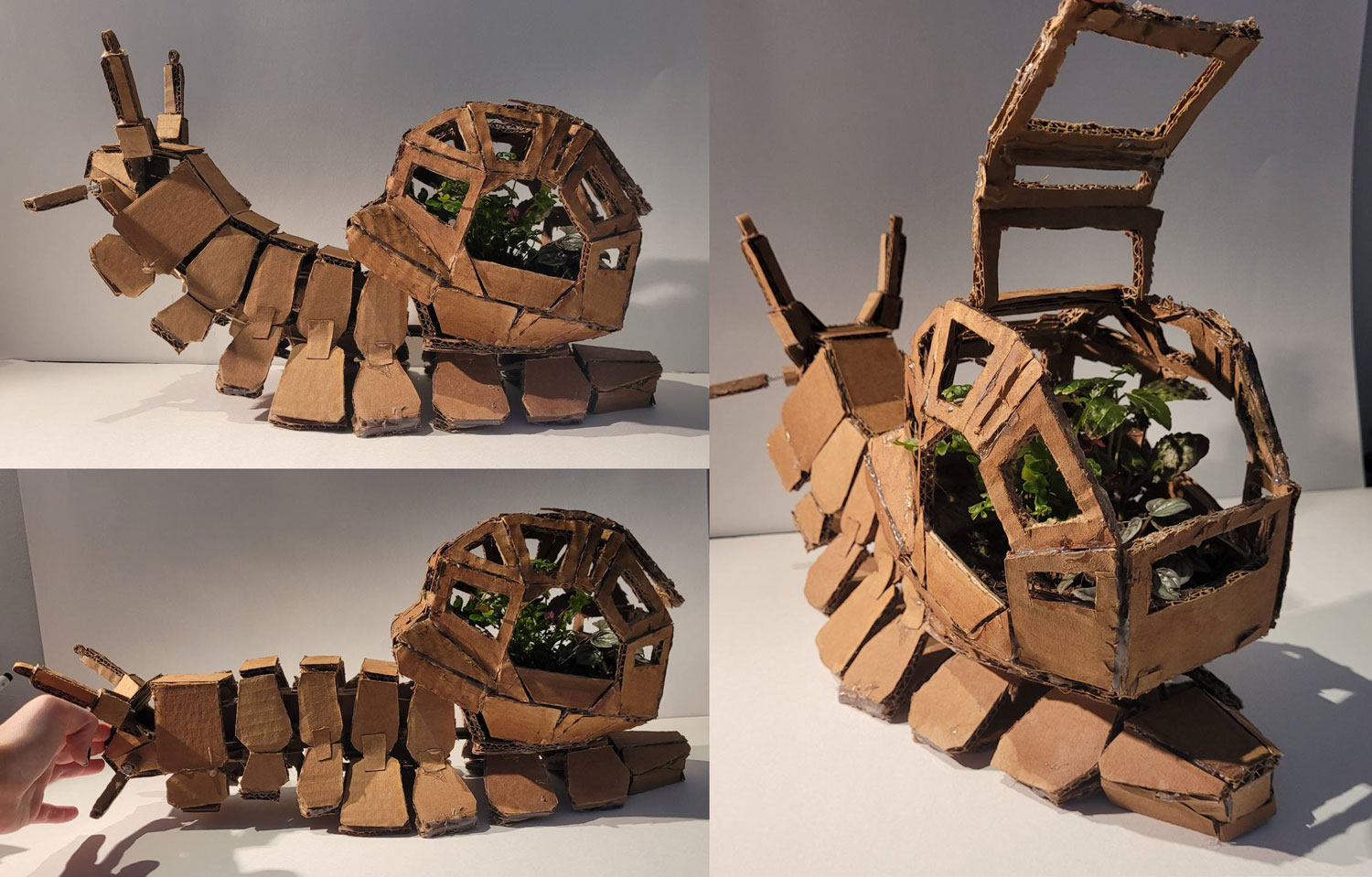
Snail Pot

Height: 9.5" x Width: 18" x Depth: 6.5' | Material(s): Cardboard rubber bands, glue, plastic plate (for plant), plastic wrap (to catch water under plate), pen springs | Process(es): "Robot Snail," plan out design based off snail drawing on image, 6 test piece parts together, add plant
How did you choose your inquiry?
When I first started AP art and design, I didn’t have a solid idea of what I wanted to make my portfolio about. I like using a thin pen and lots of detail, but I didn’t know how to turn that into a strong investigation. To start, I made a couple of artworks without following any statement or question. I just made the things I wanted to make. Seeing those projects together helped me build a question using the things that I'm interested in: imaginative world building, nature, and interactive elements. When I look at art, I like to look up close at every individual brushstroke and line. I don’t like the rule of keeping your distance from artwork. It helps me feel a connection to what I’m seeing. I find those details to be one of the most interesting parts of an art piece. So, for my portfolio, I wanted to find ways to encourage viewers to break the unspoken rule of keeping their distance and encourage them to explore the worlds I create up close. This led me to the inquiry question of “How can I reimagine complexity within nature in an innovative and interactive way?”
How did you practice or improve the written statements accompanying each artwork in your portfolio (ideas, materials, process(es), and citations) to best communicate your intentions?
To improve the statements for each artwork, I used tons of labeling in my imagery instead of trying to somehow shorten the process explanations for the designated box. Truthfully, there isn’t a large character limit for students, but that doesn’t mean you can’t find other ways to get all your thoughts into the portfolio. In my portfolio, I had a total of four art pieces. The other 11 images were close-ups, process pictures, eye-spy keys, and planning. That might not work for everyone, but if you happen to be struggling with adding your thoughts, I recommend trying labels.
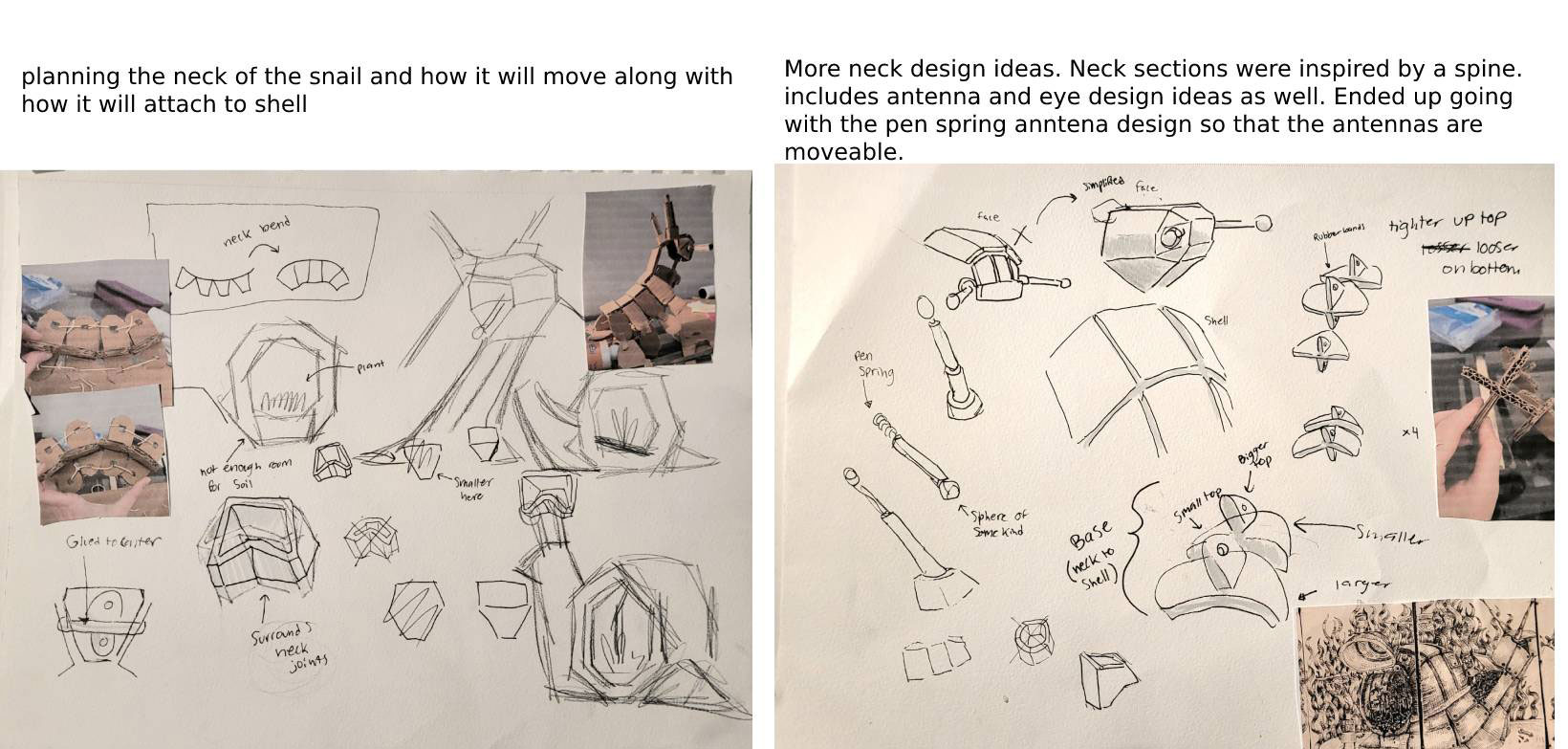
Material(s): Paper, Pen, Pencil | Process(es): Used snail drawing to design 3D version; planned ways I could make snail move
How did your art teacher support your artistic development?
During AP, my incredibly talented art teacher Mrs. Turner guided me so much. She helped me refine my investigation question and tackle my composition struggles, teaching me new techniques to direct the viewer's eye across the page exactly how I envisioned. She also constantly encouraged my class to “just make the art you want to make” throughout the year, which helped my class feel more at ease with allowing our investigations to evolve throughout AP. Mrs. Turner also kept us on track with a clear schedule for artwork deadlines, ensuring we met the required number of images. However, when I was hooked on an artwork, she counted it as multiple artworks so I could work on it a bit longer. She eventually told me to work on something new. I wasn’t stressing her out by taking three months to finish a single piece of artwork or anything like that (sorry, Mrs. Turner). I can’t thank her enough for doing such an amazing job supporting my class. She is an amazing teacher.
What is your advice to other AP Art and Design students?
If you're planning to take AP Art and Design or you're already in it, my advice is to stay true to yourself when choosing your inquiry. Pick a topic that connects with what you genuinely enjoy creating and avoid picking something completely unrelated to your current interests. Exploring a brand-new subject can be exciting, but it might be challenging to build an entire portfolio around it. Your inquiry doesn't need to be super deep unless that's the direction you want to take. Focus on what inspires you and makes you passionate about art. I would find a way to explore that even further.

Material(s): Cardboard rubber bands | Process(es): Building my design from image 7 page 2 to see if it functions the way I intended
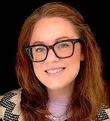
Tanya Turner
Harrison High School, Kennesaw, GA, USA
Teacher statement
Teacher statement
The AP Art and Design course supports inquiry-based personalized learning in the sustained investigation portfolio component. What strategies helped you guide students through inquiry?
My students begin their investigation by creating a "mood board" of everything that influences their work, such as art movements, colors and textures, music, still-life subjects, and more. We examine these mood boards as a group to identify common themes for each student. This results in meaningful inquiries that are authentic to the individual. Natalie's mood board featured many thoughtfully organized and interactive elements, which became a key component of her AP portfolio.
How did you structure practice, experimentation, and revision into your AP Art and Design curriculum?
Students early in the AP process create works responding to prompts that are designed based on practice, experimentation, and revision. For example, the “Power in Numbers” prompt guides students through creating 10 or more small works that come together as one piece. The “Inspired Revision” prompt asks students to build upon a previous artwork and describe how they use revision in a written statement. Another prompt requires students to create a three-dimensional model of a space from memory, then use the model as the starting point for another artwork, pushing students to use more experimental approaches. These conceptual prompts help students see the art-making process as an investigation rather than a series of stand-alone, conceptually unrelated “projects.”
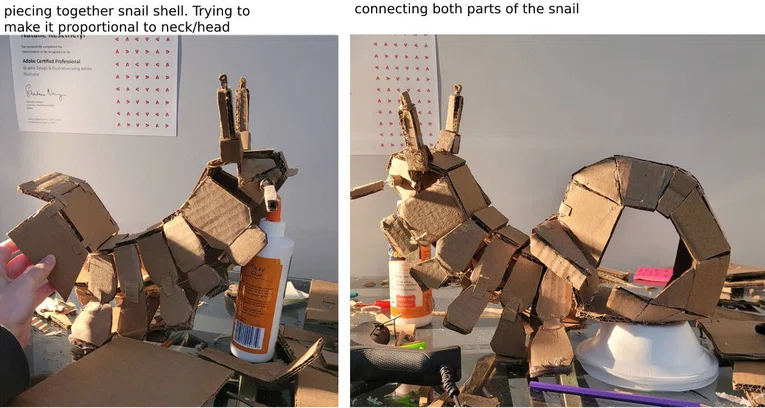
Material(s): cardboard, rubber bands, glue |
Process(es): Process Snail Pot
What did you learn from working with your student?
It is often said that it takes 10,000 hours of practice to become an expert in a field. Natalie is evidence that truly dedicating your time to a goal can yield unbelievable results. She spent countless hours over the course of years to art making, while jumping at every opportunity along the way. She entered art competitions, interviewed for summer art programs, etc. Sometimes those opportunities worked out, and sometimes she received the dreaded, “We are sorry to inform you, but…” email. No matter the outcome, Natalie remained consistent and undeterred. Over time, I’ve had the pleasure of watching her grow into the incredible artist she is today. I am thrilled to see her talent being recognized, but I want to make it clear that the real star of the show is the blood, sweat, and tears that she invested along the way. Natalie is a wonderfully kind soul and deserves every word of praise and acclaim that comes her way. I am so proud of you, Natalie!
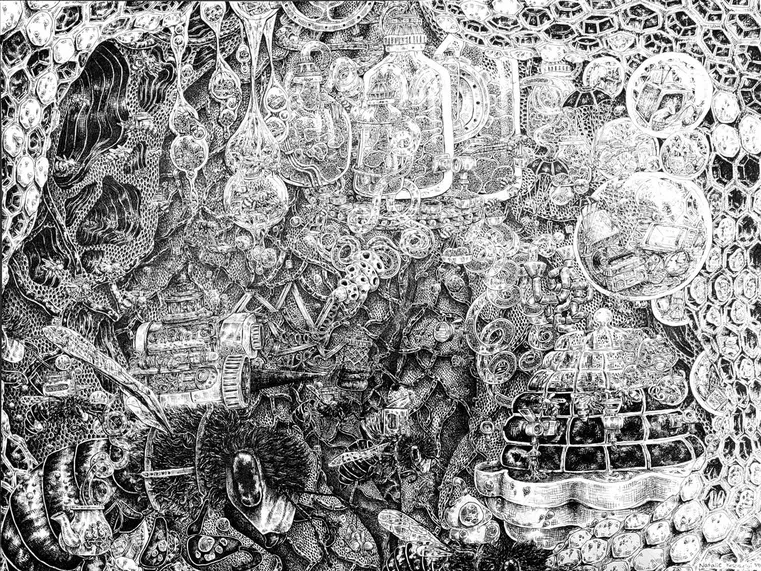

Bee Notes
Height: 18" x Width: 24" | Material(s): Used 0.1 Micron pen to create lots of detail and to add in as many hidden objects that I could | Process(es): Notes from documentary on bees, drafting machinery bees would make, composition sketch, fill with pen
Idea(s): Explored "What if bees became the new dominate species?" | Curatorial Note: Wildly imaginative artwork that moves from drawing to 3-D and back again.

I used extreme detail to explore themes of surreal worlds and machinery. Lots of my inspiration came from eye spies like Where's Waldo. I wanted to create artwork that is imaginative and pushed the traditional unspoken rules when it comes to art, such as keeping your distance and quietly looking at it.

Jeff Milton
Harrison High School, Kennesaw, GA, USA
Leader Statement
Leader Statement
What are you most proud of regarding your school’s AP Art and Design program, student, and teacher?
I am incredibly proud of our school's AP Art and Design program, which has achieved great success thanks to the dedication and hard work of both our students and teachers. The program is thoughtfully designed to foster creativity and skill development, providing students with opportunities to explore and refine their unique talents. Through this program, our students are well prepared for both academic and professional opportunities in the arts.
We are especially proud of Natalie’s achievements and her unwavering dedication to this program. Natalie has demonstrated remarkable passion and commitment to excellence, which is evident in her stunning work. The quality of her portfolio reflects not only her exceptional talent but also her growth, versatility, and the supportive yet challenging environment cultivated by the program.
This success would not be possible without the incredible leadership of Ms. Turner. She brings a wealth of experience, creativity, and enthusiasm to the classroom, inspiring students to push their boundaries and achieve their full potential. Her dedication to professional development ensures that her students receive the highest quality education, benefiting their artistic and personal growth.
What do you do to support visual arts programming in your school?
At Harrison, we actively support our visual arts programs by funding high-quality materials and tools, ensuring students have the resources they need to excel. Our curriculum spans foundational courses, advanced offerings like AP Art and Design, and interdisciplinary projects, all designed to prepare students for academic and artistic success. We also invest in professional development at both the school and district levels, keeping our teachers at the forefront of arts education. Additionally, we celebrate student achievements through shows and exhibitions, reinforcing the importance of visual arts as an integral part of our school culture.
What is your advice to other school leaders on how to support an AP Art and Design program?
School leaders must prioritize funding to ensure that students have access to high-quality materials and technology to support an AP Art and Design program. It is also essential to invest in professional development for teachers, keeping them updated on the latest techniques and curriculum changes. Creating opportunities to showcase student work and celebrate their achievements is equally important. Finally, school leaders should advocate for the program by highlighting student successes and demonstrating its value to the community. Together, these efforts help create a thriving program that empowers students and enriches school culture.

Natalie Keszthelyi
